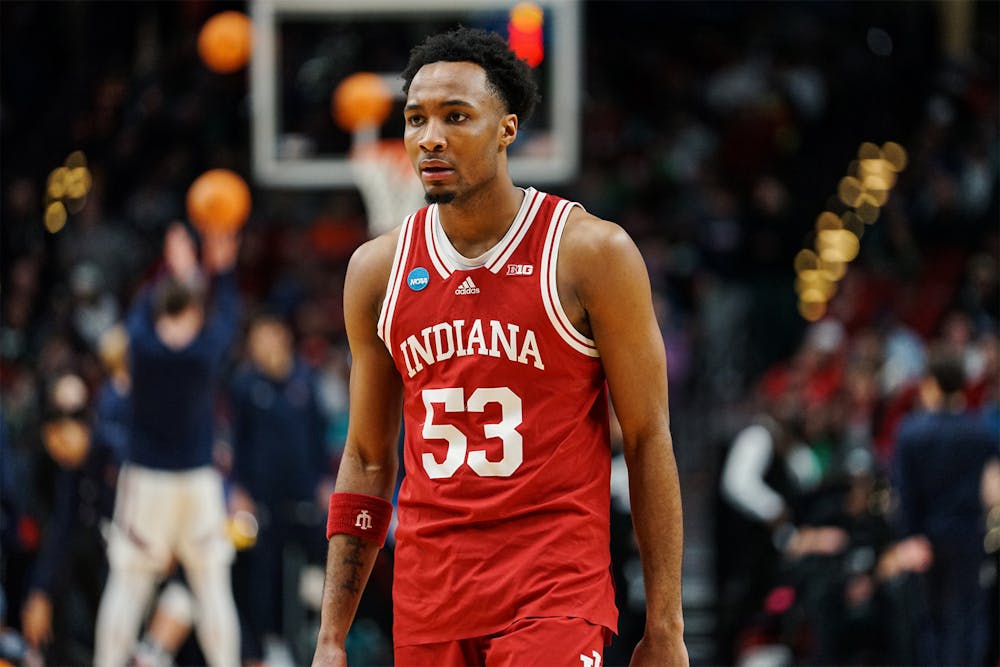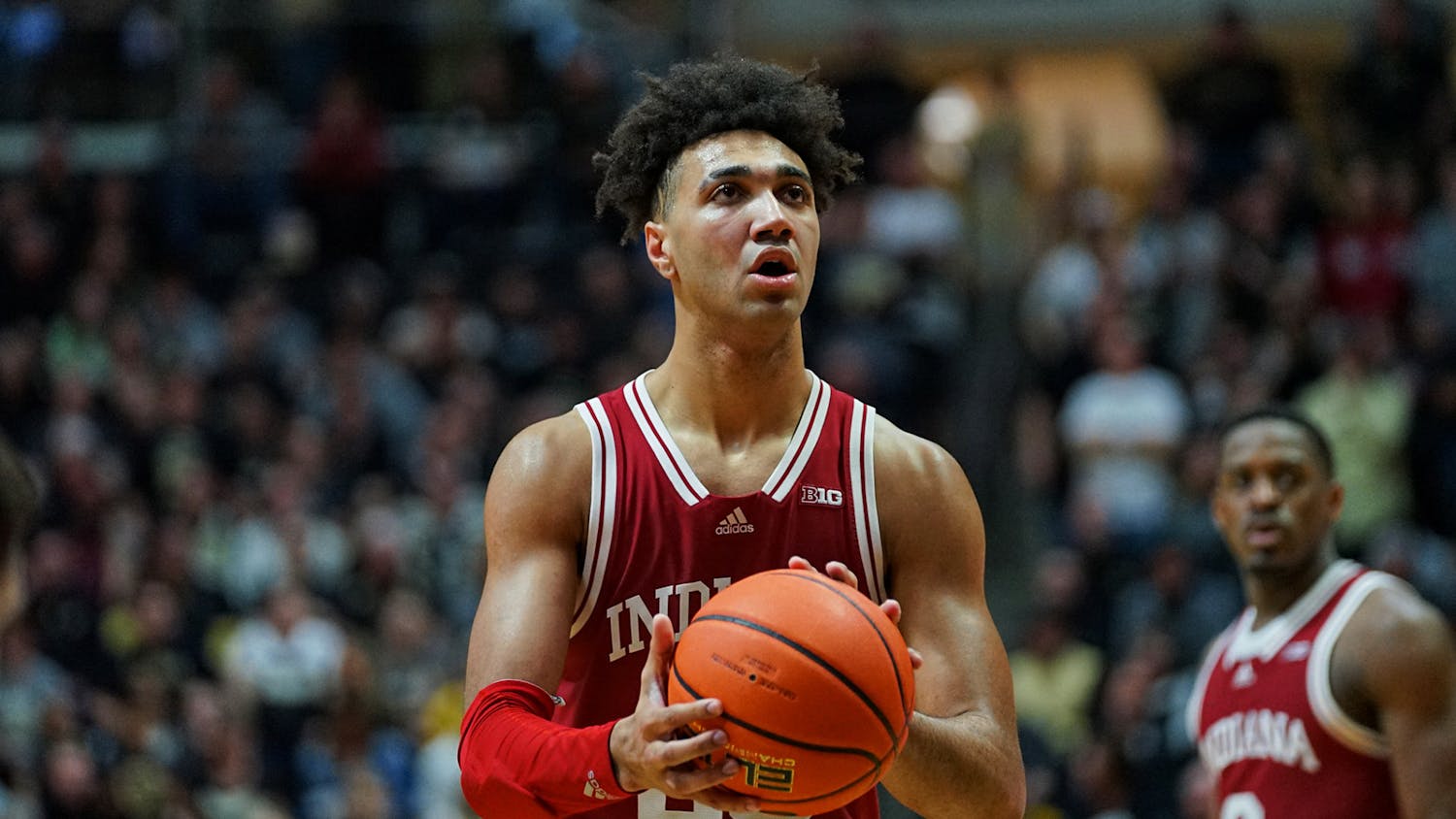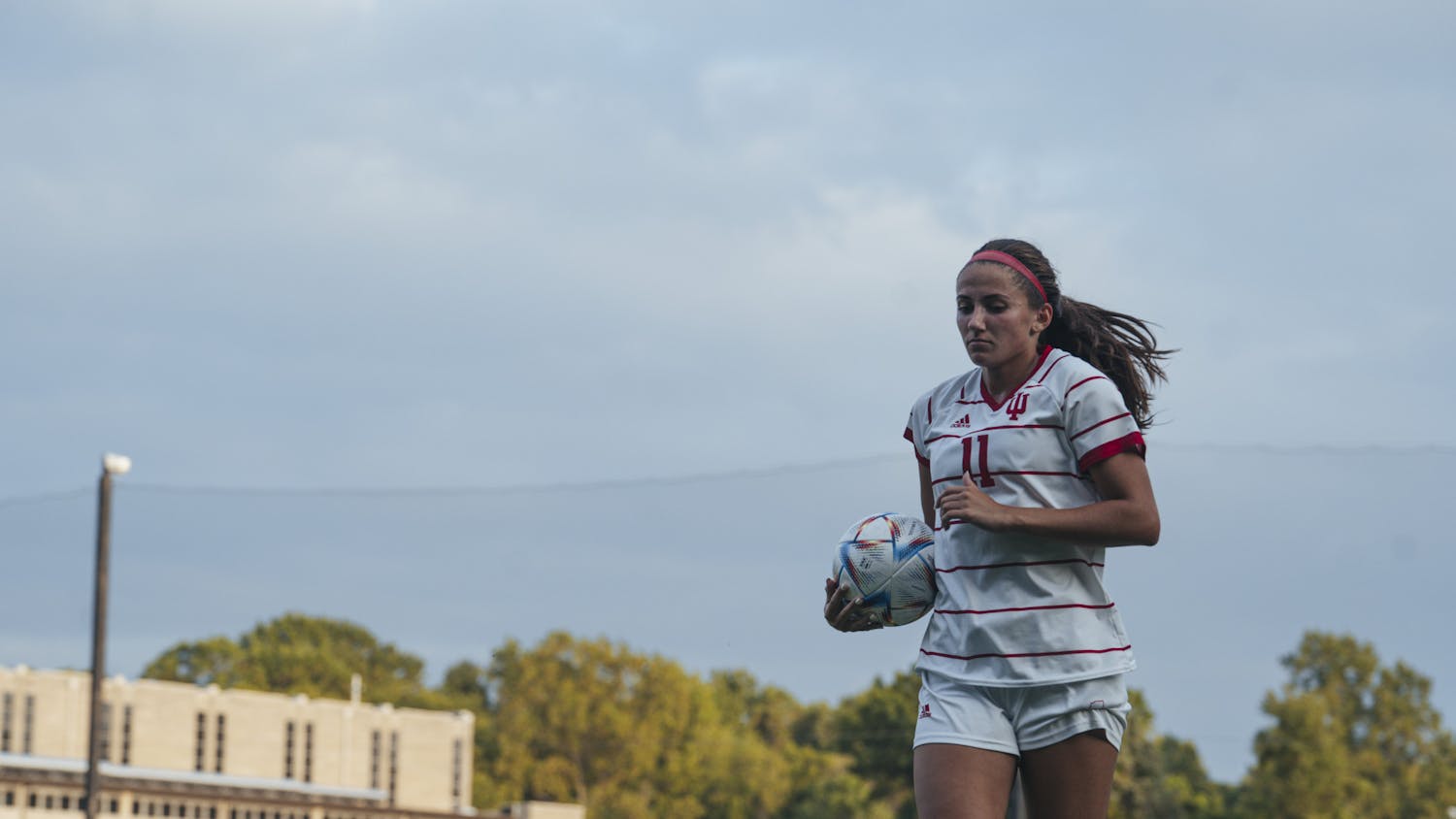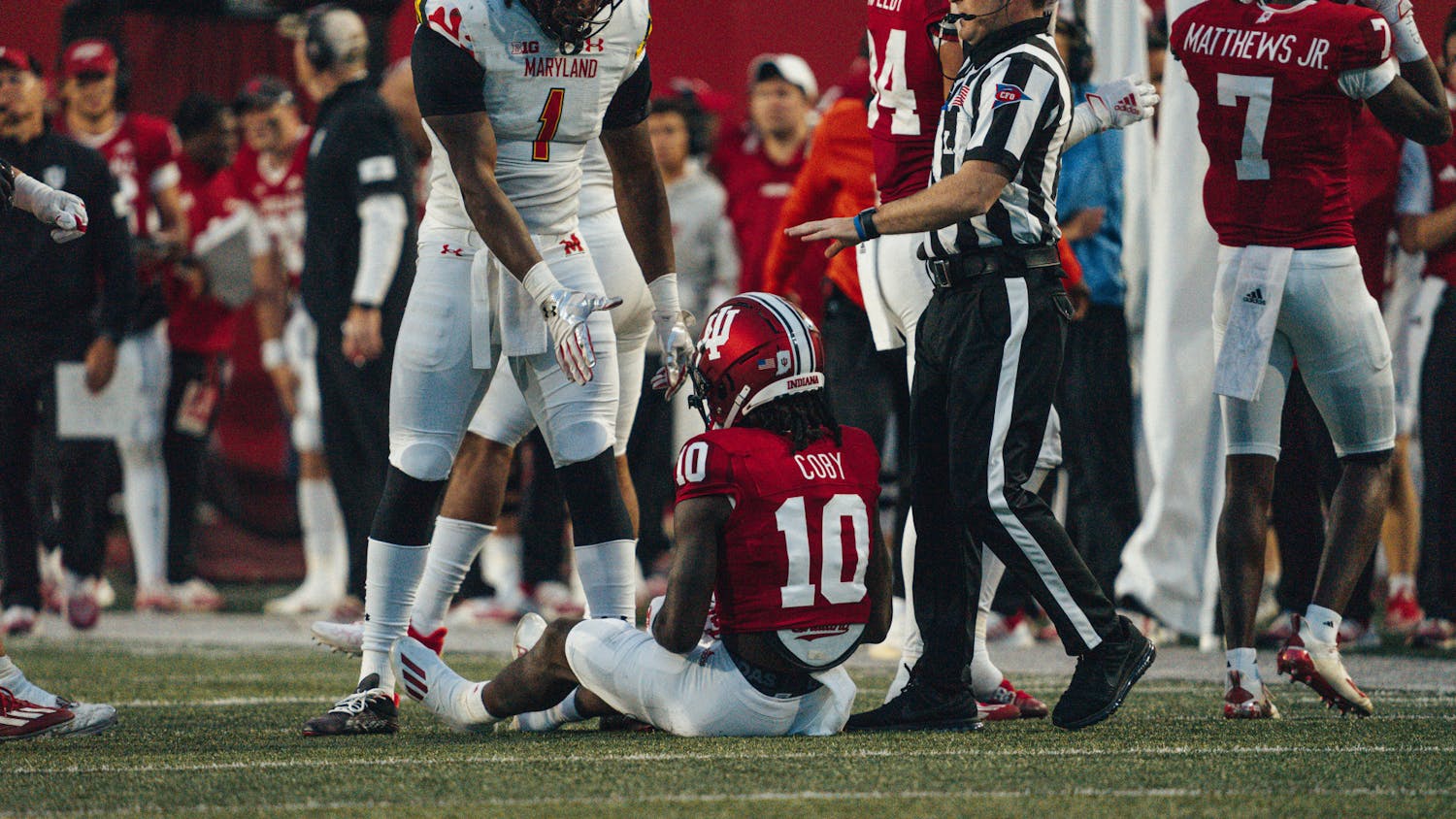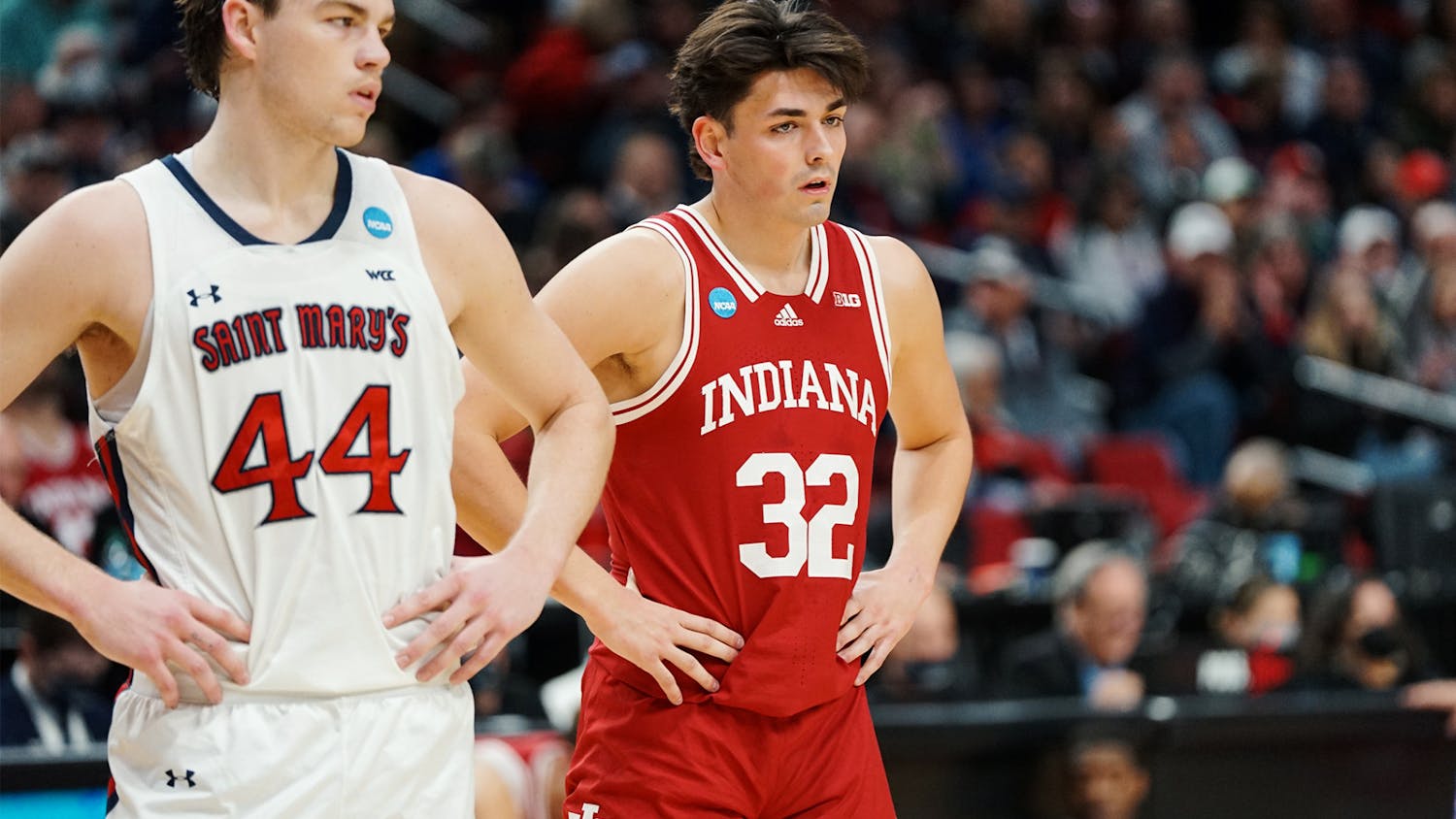There were times that Bates jumped off the screen by knocking down difficult, off-the-bounce attempts. His lengthy arms and legs allowed him to create just enough separation to get these shots off.
While no team wants to rely on these shot attempts for good offense, it’s useful to know you have a player who can bail you out. This ability comes in handy late in the shot clock when someone just needs to make a play. It’s not a skill that players should base their game around, but it’s something Bates demonstrated he could do last season.
Bates seemed to be most comfortable when the game was played at a swift pace. He was effective with an open floor and space to operate.
Like a lot of young players, the best opportunities for Bates to score came in the fastbreak. It simply felt like Bates played more loosely on run-outs than he did when the game was slowed down and congested.
Indiana played at an average pace last season, with an adjusted pace of 67.2 possessions per 40 minutes, just above the Division I average of 67.1 (per KenPom).
The Hoosiers are more athletic this year, so there’s a decent chance they play much faster. A quicker pace would benefit the skill set of Bates and several other players on the squad. If Bates sees an increase in transition opportunities, he’ll probably be able to capitalize.
WHAT BATES CAN IMPROVE
Off-ball defense
Many freshmen struggle to make reads in their first year in college basketball, and that was true of Bates last season. There were many instances when he got lost, helped too much or too little, or didn’t communicate off-ball actions well enough.
Bates wasn’t able to fully grasp what was happening away from the action last season. His on-ball defense was pretty solid, but the lack of recognition off the ball made Bates a negative on that end.
Going into his second year, it will be compelling to see if Bates is better off the ball. Mike Woodson has continually mentioned defense as a non-negotiable on his teams, so for Bates to see more than 14.5 minutes per game this year, he’ll need to show better activity on that end.
Offensive decision-making
There were several moments last year where it felt like Bates was playing too tight on the court. In some games, he’d look excellent and in other games, he wasn’t quite sure what to do.
Bates has a Kobe Bryant/Hakeem Olajuwon aspect to his game, where it’s both a blessing and a curse that he can hit highly-contested shots. Like I said earlier, these aren’t shots that you want players to rely on. These shots should be a bonus to what a player does instead of the be-all, end-all.
Bates got tunnel vision too often last season, and it led to poor results. He averaged fewer than one assist per game and struggled to consistently convert from any area of the court. Indiana needs Bates to become a more patient scorer and willing passer in the upcoming season. That, along with a general increase in shot-making, would give Bates a more consistent role in the Hoosiers’ rotation.
WHAT TO EXPECT FROM BATES IN 2022-23
While it wasn’t always pretty, the fact that Bates saw the court in big games as a freshman should pay dividends for him and IU. If he develops an increased understanding of the game while making more field goals, Bates could sneak his way into Indiana’s starting five as the shooting guard or small forward. Bates is looking to make the sophomore leap that we often see in college basketball.
This is the fifth preseason player analysis. Check out all of the deep dives here.
